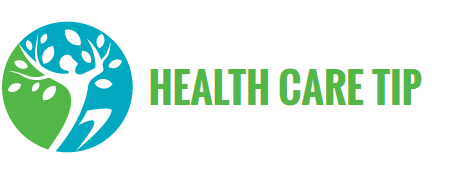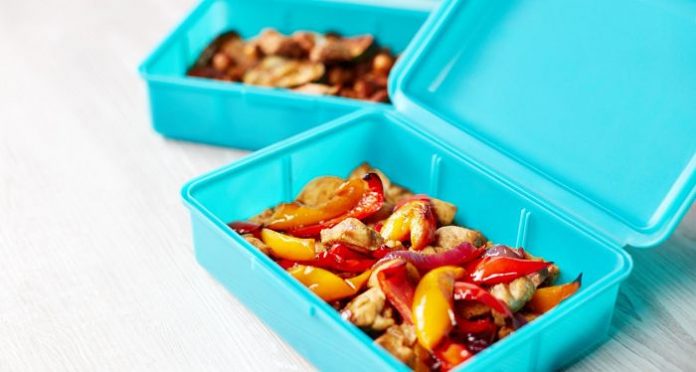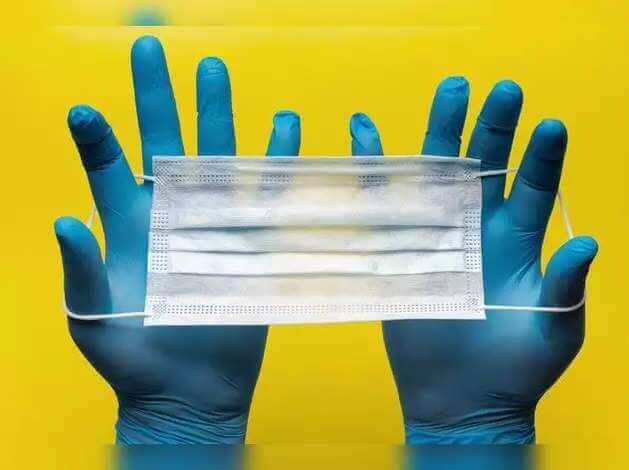When it comes to losing weight, many diets agree on the same requirement: drastically reduce carbohydrates and, usually, consume more fat. In general, this includes eliminating foods that we tend to consume in excess, such as sweets, pasta and bread, which can easily lead to weight loss. But is a low-carb diet the only way to lose weight?
Contents
What do carbohydrates do?
Carbohydrates are the body’s main source of fuel. They are broken down into energy to be used by our brains, lungs, muscles, and other cells. They are especially important for high-intensity exercise, when we push our muscles to the max.
After digestion, carbohydrates travel through the bloodstream (known as “blood sugar”). The body produces insulin, which sends sugar to cells for energy or storage (when we have more than we need).
What is a low carbohydrate diet?
A low-carb diet is exactly that: cutting back on carbs to dramatically reduce the ratio of daily macronutrients (protein, carbs, and fat). This may include foods such as fruit, depending on how strict the diet is. The idea is that by reducing carbohydrates, you reduce excess calories.
Why are carbohydrates bad for weight loss?
When it comes to losing weight, carbohydrates can be “bad” if you consume foods rich in carbohydrates in excess, such as: consuming pasta, pizza and sweet desserts, in addition to consuming healthy foods rich in carbohydrates (fruits, whole grains and dairy products).
Many studies have shown that low-carb diets can work simply because they reduce total calorie intake. 1 But, both low-carb/high-fat and low-fat/high-carb diets can be just as effective, as long as they reduce total calorie intake. two
Low Carb vs Low Fat Diet for Fat Loss
Although there are people who defend both one diet and the other, science shows that they can be just as effective for weight loss, as long as more calories are burned than consumed through food. two
Low-fat diets have been popular for a long time, since fat has more calories (9 per gram) than carbohydrates or protein (4 per gram). Since high-fat foods are also often high in calories (fried foods, oils, etc.), reducing your intake of these types of foods is an easy way to reduce your overall calorie intake. Low-fat diets are also considered more heart-healthy, as they are lower in saturated fat.
Although carbohydrates have fewer calories per gram than fat, servings of high-carbohydrate foods are often large and easier to overeat because they are not as filling and satiating as high-fat or high-protein foods.
Fat slows down digestion and keeps food in the stomach longer, sending satiety signals to the brain. Protein works in a similar way to make you feel more satiated, so people following a high-fat, high-protein, low-carb diet can achieve a reduction in total calorie intake.
How do low carb diets work?
Carbohydrates are the main source of glucose, which is the basic fuel for the brain (and the rest of the body). When you minimize carbohydrates in your diet, the body needs alternative sources of energy and begins to break down fat for energy.
Generally, when carbohydrates are reduced in the diet, more protein and fat are consumed. Depending on the type of diet you follow, you can eliminate starchy fruits and vegetables or simply eat them in smaller portions and less often.
Benefits of a low carbohydrate diet
Are you trying to follow this type of diet? Studies have shown that a low-carb diet reduces appetite. It is believed that there is a greater feeling of satiety due to a higher intake of protein and fat, but, even so, the total caloric intake is reduced. 3
In addition, you are also likely to lose more weight than with other diets, because the body works to eliminate excess water, which means that more weight will be lost during the first week or two. 4
Following a low-carb diet also increases HDL cholesterol (good cholesterol), as it encourages the consumption of healthier fats to replace some of the calories from carbohydrates. 5
Risks of a low-carb diet
It can be common to have low sodium levels on a low-carb diet. This is because on this type of diet insulin levels drop, so the body begins to eliminate sodium along with water. Sodium is an important electrolyte and if levels drop too low, you can experience dizziness, fatigue and headaches.
popular low carb diets
keto diet
The Keto diet emphasizes a high-fat, very low (or no) carbohydrate eating pattern. When the body doesn’t get carbohydrates (and not too much protein) from food, it begins to break down fat stores for energy, a process called ketosis. This process produces ketones, which are an alternative source of energy for the brain to use instead of glucose.
Maintaining this state of metabolic ketosis can be difficult, as the body will switch back to burning glucose when you consume excess carbohydrates. Also, the fat you’re consuming will accumulate if you go back to consuming carbohydrates (which can slow down weight loss).
Although it is a very popular diet and can offer quick results, sticking to it long-term can be a difficult task for some people.
Atkins Diet
The Atkins diet is another popular low-carb eating pattern that focuses on high-protein, high-fat foods, but is broken down into “phases” that help slowly reintroduce certain “healthy” carbohydrates in small amounts when you achieve your desired weight loss .
It is less strict than the Keto diet and sporadically allows the consumption of some carbohydrates, while the Keto diet eliminates them to keep the body in a fat-burning state.
South Beach Diet
The South Beach Diet is similar to the Atkins Diet. It’s a low-carb eating plan that is broken down into phases to slowly reintroduce a small amount of carbs for long-term maintenance. The main difference from the Atkins diet or Keto diet is that it emphasizes low-fat meats and heart-healthy fats.
The Effects of Low Carbohydrate Intake on Exercise
Although a low-carb diet can be an easy option for weight loss, how does it affect performance when our muscles depend on it for energy?
Refueling after a workout should focus on two things: replenishing muscle glycogen (the way carbohydrates are stored) and protein for muscle repair and growth.
After an intense workout, muscles run out of energy stores (known as glycogen) and rely on dietary carbohydrates to replenish those stores before exercising again.
Athletes need to consider two key factors: their total daily carbohydrate intake and when they consume it. 6 It is crucial to consume easily digestible carbohydrates after intense training to promote recovery and replenish glycogen stores.
Although there are people who can train well following a low carbohydrate diet, others who are used to consuming carbohydrates may notice a drop in performance if they suddenly eliminate them. 6
There are athletes who use “carbohydrate cycling” for performance, which consists of alternating days with higher carbohydrate consumption and days with lower carbohydrate consumption, planned based on training and recovery/rest days.
This is a way to try a low-carb eating pattern while still fueling your body for more intense workouts when needed.
Although it follows the principles of a low-carb diet while taking into account the need for glucose for recovery, there is little scientific evidence or published guidelines on carbohydrate cycling.
You can test yourself for an alternative low/high carb meal plan to meet your goals.
Diet plan and tips
Low-carb diets vary greatly from one another and have to be adjusted based on your health, the weight you need to lose, and the amount of exercise you do.
We can find many low-carb convenience foods on the market, like cauliflower pizza crust and low-carb bread, but it’s just as easy to go for healthy, whole foods.
If you want to try a low-carb diet to lose weight, we show you some ideas of foods that you should include in your diet and others that you should avoid.
low carb meals
Low-carb foods (eat often):
- Meat
- Eggs
- Chicken
- Turkey
- Fish
- Green vegetables
- Walnuts
- Seeds
Moderate carbohydrate foods:
- Dairy products (milk, yogurt)
- bean
- Some gluten-free grains (quinoa, millet)
- some fruits
- Certain starchy vegetables (peas, sweet potatoes)
- Foods to avoid
High-carbohydrate foods (avoid them):
Sugary foods (desserts, baked goods, soft drinks, juices)
Pasta
breads
Rice
Noodles
Potatoes
Corn
Cereals
Low-fat “diet” foods (usually high in carbohydrates)
Depending on the type of low-carb diet you want to follow, you can also include, eliminate, or limit any of the moderate-carb foods. Here are three low carb examples for every meal of the day (and snacks).
drinks to avoid
Alcoholic beverages like beer tend to be high in carbohydrates, because starch is one of the main ingredients. However, that does not mean that you have to change it for a cocktail, because normally, fizzy drinks and juice are high in sugar and therefore carbohydrates.
low carb meal plan
Breakfast:
Tortilla with cheese, chopped peppers and onion
Cottage cheese with peanut butter
Spinach and bacon scramble
Food:
Turkey or ham and cheese and cucumber roll-ups
Spiralized Zucchini Noodles (or Spaghetti Squash) with Alfredo Sauce and Coleslaw
Tuna salad with mayonnaise and green shoots
Dinner:
Grilled Chicken with Sautéed Mushrooms and Asparagus
Salmon, cauliflower “rice” and sauteed vegetables
Bacon Cheeseburger (no bun) with grilled vegetables
Snacks:
Peanut Butter Celery
Tomatoes with mozzarella cheese, topped with olive oil and balsamic vinegar.
Kale chips with mashed avocado
Why Your Low Carb Diet Might Not Work
Have you cut carbs to the max and still haven’t lost the weight you hoped for? Just because you cut out carbs doesn’t mean weight loss is automatic. If you replace carbohydrate calories with more protein or fat, you may even end up gaining weight instead of losing it.
To lose weight you must maintain a calorie deficit, which means consuming fewer calories than you burn in a day. So if you cut 100 kcal from carbs, but then replace it with 100 kcal from protein, you won’t get into a calorie deficit and you won’t lose weight.
For a low-carb diet to work, you have to cut back on carbs, but it’s important not to get those extra calories from other food groups.
conclusion
Low-carb diets are a popular and easy way to lose weight. They limit the options of some foods to achieve a lower overall caloric intake.
Some types of diets restrict entire food groups outright, while others reintroduce carbohydrates once you’ve lost the weight you want. But, carbohydrates are crucial for recovery and, if cut too low, can affect performance in some athletes.
There are many different types of low-carb diets, and it’s important to consider your goals and lifestyle before deciding on one diet or another.









